Darley Abbey - Heritage Walk No. 4a - St Matthew's Church
w/e 09 March 2014
All of this week's pictures were
taken with a Kodak DX6490

After uploading the fourth Darley Abbey Heritage
Walk "The Church", the vicar of St Matthew's contacted
me with an offer to open the church and let me see the inside
should I wish to visit again. Unfortunately when I got in touch
with Rev. Christine Dyer to arrange a mutually convenient date
and time, it transpired that she was ill and in no fit state
to meet us. Instead her curate Rev. Caroline Rhodes stepped in
and I was able to get a bonus set of images which actually form
a supplementary set to Part 04 of the Heritage Walks.

Anticipating traffic delays due to ongoing road works in Derby,
we set off early one bright and warm spring afternoon and arrived
at St Matthew's early which enabled us to explore the churchyard
and search for the Evans' family graves that we had missed on
our previous visit. It was Thomas Evans and his sons William
and Walter that established the water powered cotton mills by
the River Derwent in the 18th century.
|
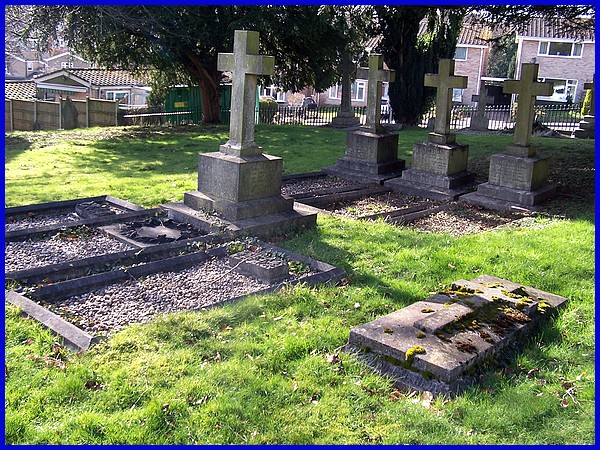
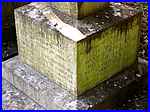 We easily found the Evans' graves
this time and were surprised that we had missed them previously.
That's why it pays to research a project fully before embarking
on it! Several members of the family were interred in the crypt
but here lie the remains of Walter II and his first wife Susan
with their son Arthur. Also buried here are his second wife Ada,
his brother Henry and Ada's sister Margaret Roscow. The plot
also contains the grave of Alfred Ainger, Master of the Temple
Church in London who was a long standing friend of the second
Walter and the uncle and guardian of Ada and Margaret Roscow. We easily found the Evans' graves
this time and were surprised that we had missed them previously.
That's why it pays to research a project fully before embarking
on it! Several members of the family were interred in the crypt
but here lie the remains of Walter II and his first wife Susan
with their son Arthur. Also buried here are his second wife Ada,
his brother Henry and Ada's sister Margaret Roscow. The plot
also contains the grave of Alfred Ainger, Master of the Temple
Church in London who was a long standing friend of the second
Walter and the uncle and guardian of Ada and Margaret Roscow.
|
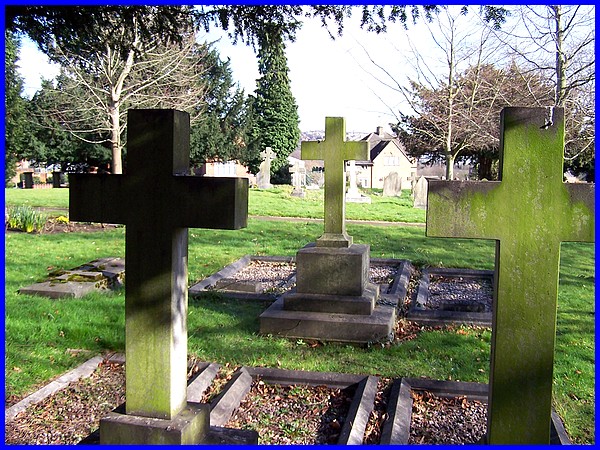
From behind the headstones the alignment towards the mill complex
can be seen contrasting with the normal east-west line of the
other graves in the churchyard and again, once you know what
to look for, makes it easy to locate them. The open grass area
nearby is where many of the mill workers were buried although
the inscribed slate markers of most of them have been moved closer
to the church and the Friendship Room as we saw previously in
Part 04.
|
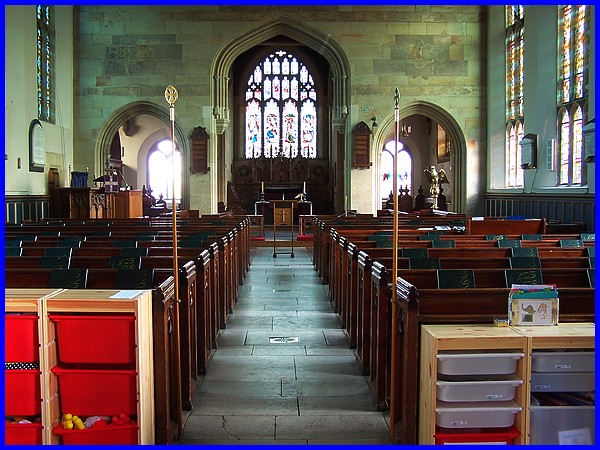
And it was from the Friendship Room that we entered the church
to see some of the features inside, this being the main purpose
of our visit. Looking towards the alter through the nave, the
lectern seen on the far right was presented to the church by
the villagers to mark the marriage of Walter and Ada in 1896.
|
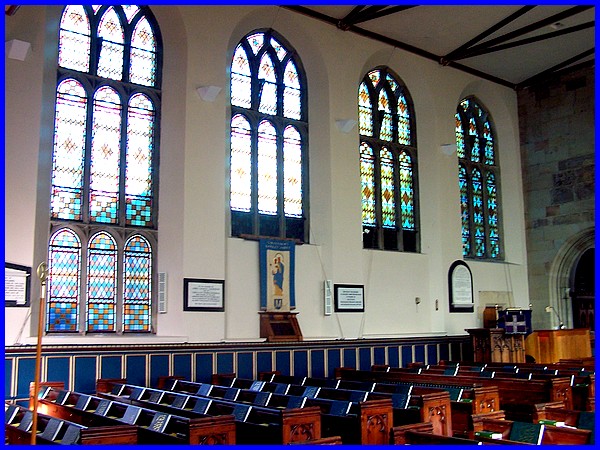
Today all of the nave windows contain coloured glass which was
installed in 1886 to replace the original clear glass from when
the church was built in 1818/19. The lower tier had also been
bricked up until 1950/51 but six windows were then opened up
and coloured glass inserted there too. This view also shows several
of the memorial plaques on the wall of the nave.
|
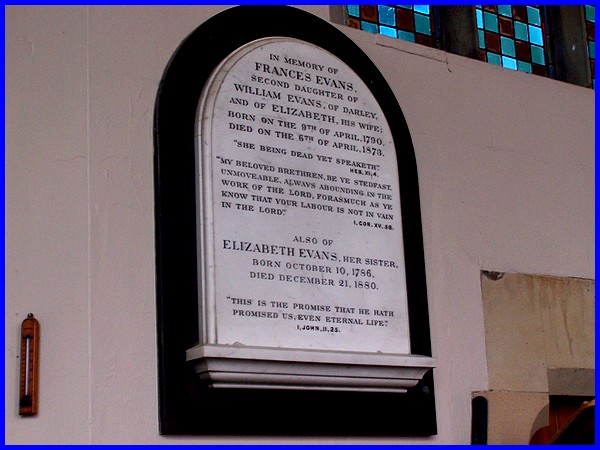
One of the plaques on the west wall commemorates Walter and Elizabeth
Evans in recognition of Walter who funded much of the building
costs. He was also responsible for building the school in Brick
Row, which we will see in Part 05, in 1826. There are several
more memorial plaques to members of the Evans family including
the one above on the west wall whilst in the Baptistry two plaques
are memorials to Arthur, son of Walter I and Elizabeth and to
Colonel John Evans who saw action in the Crimea and the Indian
Mutiny in the 1850s.
|
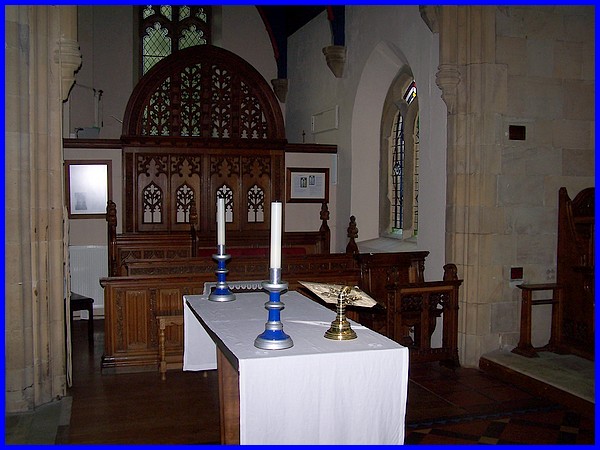
The altar is a simple wooden table but the wood carving of organ
screen in the north chancel aisle is noted for its excellent
quality which is matched by the equally fine choir stalls.
|
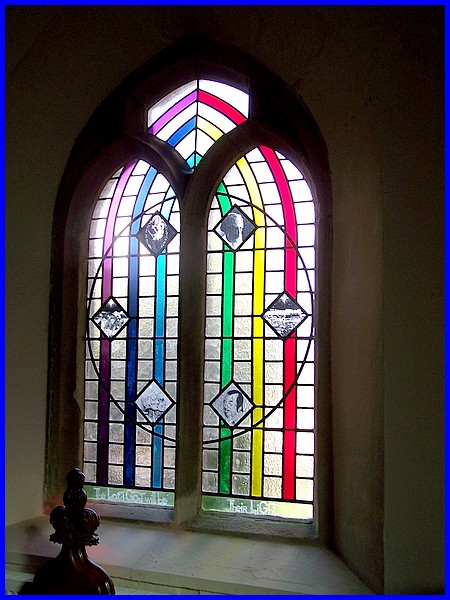
As we have already seen the nave windows were replaced in 1886
but from then until the 1950s the church was left largely untouched
until the internal walls and ceilings were restored and repainted.
The Fellowship Room was added in 1965, extended and refurbished
in 2001 and substantial work undertaken in the chancel at the
start of the new millennium. And in 2003 the Millennium Window
was installed in the east wall of the North Chancel aisle with
six diamond shaped images depicting the Light of God through
2000 years of Christian history.
|

The main East Window behind the altar is dedicated to the memory
of Susan Evans, Walter's first wife and their son Arthur who
died aged just 15 whilst a smaller window in the south wall of
the Sanctuary is dedicated to Walter himself. The East Window
dates from 1891.
|
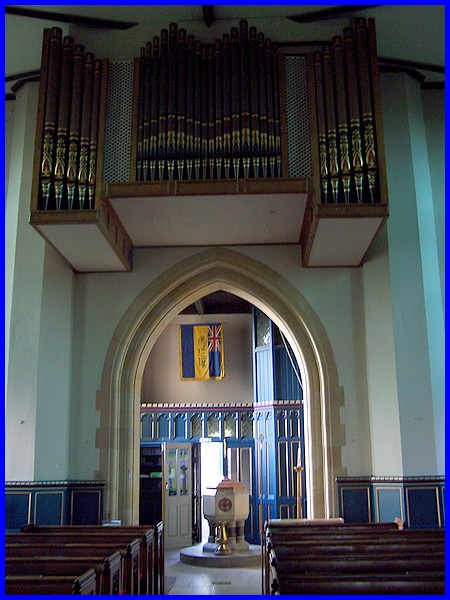
At the west end of the church at the exit to the Fellowship Room
stands the font which was presented to the church by the children
of the village in 1886. Above can be seen the pipes of the organ
which was installed in the North Chancel in 1886 by Forster and
Andrews of Hull. It was hand pumped until 1931 when an electric
blower was installed, enlarged and refurbished in 1986 and completely
rebuilt by Henry Groves & Son of Nottingham in 2000 when
it was moved to the west end above the Baptistry arch.
I am indebted to both Rev Christine Dyer and Rev Caroline Rhodes
for their cooperation in helping to produce this page. My thanks
also are extended to Wendy and June Bitton who originally produced
the text for a leaflet in 1989 which was updated in 2006 (available
at St Matthew's) and from which much of the information on this
page has been taken. Thank you to all involved.
The final walk in the series will take us back from information
board B to board A at the side of the Derwent.
|

